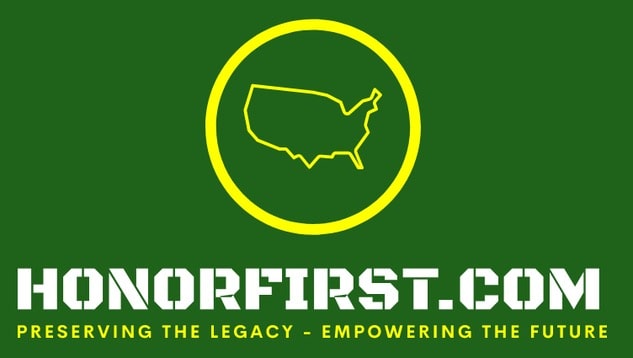March 19 - March 25Intro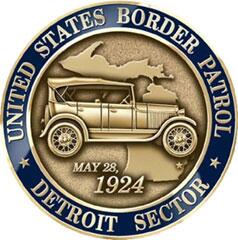 Detroit Sector Challenge Coin Detroit Sector Challenge Coin Good morning, Welcome to another This Week in USBP History! Last week, we spoke about the Patrol (and CBP) righting a 96-year-old wrong by finally recognizing the death of Patrol Inspector Orin F. Hush as having occurred in the line of duty—a shining example of valuing the workforce. That discussion naturally led me to point out the 23-year-old wrong, in which the Patrol submitted the paperwork to have Border Patrol Agent John Charles Gigax honored by having his name inscribed on the National Law Enforcement Officer's Memorial (NLEOM), but has refused to add his name to their Honor Roll and the CBP Valor Memorial (utterly unsatisfactory and easily remedied). After that post, and to my surprise, I received a phone call and an email from USBP HQ, which left me with the impression that the Patrol has no plans to honor Agent Gigax. It's astounding that they would have his name put on the NLEOM but not honor him themselves! Moving along, last week I promised to continue discussing the importance of valuing the workforce, with a focus on the individual primarily responsible for Patrol Inspector Orin F. Hush's death receiving its proper recognition—retired Acting Watch Commander Mark Hall. Mark graduated with Class 167 and EOD'd in 1984. He spent a few years on the southern border and the rest of his career (over 30 years) in Detroit Sector. He had been a Supervisory Border Patrol Agent for 15 years (2003-2018) and loved being a in the field with the troops. Mark stayed in the Patrol until the mandatory age of 57 and retired February 28, 2018. Little do most people know, Mark is a bona fide Border Patrol hero, having been in four harrowing lifesaving situations. Instead of recounting them all, I'll focus on one particular incident... After Mark had retired from the Border Patrol he became a non-uniformed rehired annuitant (02/2019-02/2022). During that time, one of his coworkers discovered a conspicuous act of heroism in which he and his partner had participated in 1990. Allow me to share the story with you. On August 27, 1990, Border Patrol Agents Mark Hall and Albert Ornelas demonstrated exceptional bravery while assisting Detroit Police Officers in apprehending a dangerous criminal in Detroit, Michigan. The suspect, Pedro Herrera, had previously fired upon officers and was intent on causing further harm to law enforcement. During the pursuit, Herrera lost control of his stolen vehicle and started firing at the officers. Agents Hall and Ornelas, without hesitation, engaged the gunman in a firefight, risking their lives to protect their fellow officers and the community. Notably, both agents faced great peril without cover or concealment as they courageously engaged Herrera, showcasing their unwavering commitment to the safety of others. Their swift and decisive actions ultimately led to Herrera's arrest and the prevention of further harm. Their courage and selflessness in the face of imminent danger not only saved the lives of their fellow officers but also fostered a strong bond of trust and mutual admiration between the U.S. Border Patrol and the Detroit Police Department. Despite their heroic actions, Agents Hall and Ornelas have not yet received formal recognition from the U.S. Border Patrol. Mark's coworker, familiar with the USBP Honorary Awards program and its ability to recognize past acts, began collecting evidence of his heroism, such as the 2019 letter below written by Robert B. Dunlap, Chief, Wayne County Sheriff's Office. Robert was one of the two Detroit police officers that Mark and his partner saved in 1990.
Once enough information was gathered, nominations for Newton-Azrak Awards were submitted for Mark and Albert. However, by April 2020, Chief Ortiz had prohibited the consideration of any event occurring more than two years prior unless he granted a waiver. Detroit Sector submitted the waiver, and it was promptly denied. In August 2022, Chief Ortiz reevaluated his previous decision to disallow recognition of past acts and subsequently directed the revival of all previously disapproved nominations, affecting 370 employees (see This Week in USBP History, Vol. 52). This decision ensures that these acts will undergo the appropriate process to receive the recognition they deserve. However, Mark's and Ornelas' nominations were never entered into the nomination system (BPETS), because their waivers were denied. They were not part of the revived nominations affecting 370 employees. As the 33rd anniversary of this event approaches, it is vital to acknowledge the outstanding acts of bravery displayed by Agents Mark Hall and Albert Ornelas, whose actions have left a lasting impact on the law enforcement community and the city of Detroit. I should mention that Mark and Robert developed a lasting friendship and talk to each other regularly. Albert left the Patrol in 1992 and worked as a criminal investigator with the Drug Enforcement Administration. He would later move on and become a Federal Air Marshall where he retired in 2008. This week's update starts in 1907 when Jeff Milton accidentally shot a man in the foot while breaking up a dog fight. We have a 17-page outline penned by Charlie Askins "for a course of Instruction (pistol) for future Border Patrol Training Schools". We have a 7-page document from 1953 discussing the importance of fencing in the modern-day Rio Grande Valley Sector. And much more! We celebrate nine Newton-Azrak Award recipients on the anniversaries of their actions, including the first two female recipients from 1994. We remember three of our fallen on the anniversaries of their deaths. Enjoy and have a fantastic week! Cliff PS -
ESPRIT DE CORPSThe workplace climate resulting from a combination of organizational pride and employee morale.
Esprit de corps is reinforced through the shared goals, mission and values of the organization and its employees. The definition turns Esprit de Corps into a simple formula and defines parts that comprise organizational pride and employee morale. Esprit de Corps = Organizational Pride + Employee Morale Esprit de Corps is the key to a healthy organization and engaged employees. Honor First is foundational to the Border Patrol's organizational pride and integral to its Esprit de Corps. DOCUMENTS AND EVENTS1907
1926
1930
1935
1942
1945
1953
NEWTON-AZRAK AWARD ACTION ANNIVERSARIESFollow this link to see examples of USBP employees Upholding Honor First.
1979 Kenneth D. Crockett - group photo Border Patrol Agent Yuma Sector Larry M. Herbert Investigator Yuma, Arizona William A. McIver - award documents, photo 1, photo 2 Border Patrol Agent Houlton Sector On March 25, 1978 at approximately 6:30 PM, Agent Larry Herbert was near a construction bridge that spans the Andrade and Morales area near Yuma, Arizona. The water which flows under the bridge is constricted which creates an extremely dangerous and turbulent whirlpool. As Agent Herbert approached the bridge, he saw three people in a small boat. The operator of the boat was frantically attempting and failing to start the boat's motor. Agent Herbert immediately radioed for help. Agent Herbert attempted unsuccessfully to reach the people with a tow strap before it was pulled into the turbulent waters where it capsized spilling the occupants into the water. All of the occupants were having difficulty keeping their heads above water. Agent Herbert was able to quickly pull two of the victims from the water. Keeping the third person in sight, he instructed one of the people he had just saved to use his Service vehicle's radio to advise that more help was needed. Upon seeing that the third victim had been pulled into the whirlpool, Agent Herbert jumped into the water to rescue him. Becoming exhausted and unable to save the victim, Agent Herbert swam to shore. As Agent Herbert swam to shore, Agent William McIver and Agent Kenneth Crockett arrived at the scene. Agent McIver immediately jumped into the water and entered the whirlpool with the victim. After a tremendous struggle, Agent McIver was able to escape the whirlpool with the victim. Having become exhausted, Agent McIver couldn't get himself and the victim out of the water. Agent Crockett then reach out and was able to pull both Agent McIver and the third victim to shore. 1992 Theo D. Hudson - nomination memo, 1992 commissioner's awards pamphlet Senior Patrol Agent Tucson Sector Presented on March 19, 1992, to Senior Border Patrol Agent Theo D, Hudson for his outstanding and innovative contributions to the Intelligence Program in the Tucson Sector of the United States Border Patrol. His innovations have greatly enhanced the law enforcement efforts of this Sector in combatting narcotic and undocumented alien smuggling. During the period April 1, 1990 to March 31, 1991, while assigned to duties as Intelligence Agent, Theo D, Hudson designed and developed a "situation board" for tracking and documenting narcotic and undocumented alien entries into the United States which successfully evaded our apprehension. This system now enables the Tucson Sector to identify the trends, patterns and methods used by smugglers to avoid detection. It has been directly linked to the detection of three (3) major air smuggling routes through southeastern Arizona, the-seizure of numerous tons of marijuana and the apprehension of hundreds of undocumented aliens and their smugglers. Smugglers are now forced to resort to more radical and unconventional methods of smuggling, such as the recently discovered "Cocaine Tunnel" in Douglas, Arizona. Due to the proven value of this system of intelligence gathering in the Tucson Sector, Agent Hudson's system is currently being considered for service wide implementation. 1994 *First female Newton-Azrak Award recipients Christina M. Carnes* Border Patrol Agent El Paso Sector David Hinojosa Jr. Border Patrol Agent El Paso Sector Cheryl R. Smith* Border Patrol Agent El Paso Sector Bruce L. Cooke Supervisory Border Patrol Agent El Paso Sector On March 20, 1994, Rose Johnson-Navarro was involved in a one-vehicle accident on Paisano Avenue in El Paso, Texas. Her vehicle had gone out of control, crashed through a fence and guard rail, and came to rest on its wheels with the front end slanted down towards a deep canal. Supervisory Border Patrol Agent Bruce L. Cooke, Border Patrol Agents Cheryl Smith, Christina M. Carnes, and David Hinjosa Jr. of the El Paso Border Patrol Station responded to the scene. The entire front part of the vehicle was engulfed in flames that swept back over the front half of the vehicle. The inside of the vehicle was completely obscured with smoke. A bystander informed the agents that no one had escaped from the vehicle. With the knowledge that someone was still inside the burning vehicle and at great personal risk, the agents attempted to extinguish the fire with a fire extinguisher. They managed to suppress the fire enough to open the driver side door. They then entered the burning vehicle and extricated Ms. Johnson, who was injured and unable to escape. After being carried to a safe distance, Ms. Johnson advised the agents that her two children were still inside the vehicle. Agents Smith, Carnes, and Hinjosa then returned to the vehicle that was almost fully engulfed in flames and managed to search for the missing children to no avail. It was later determined that the children had not been in the vehicle. Agents Cooke, Smith, Carnes, and Hinjosa, at their own personal life risk, saved the life of Rose Johnson-Navarro by exercising unusual courage and bravery. 2013 Ruben Mendoza - photo Border Patrol Agent Hebbronville, Texas For his heroic actions to save a wounded agent under extreme duress. On March 21, 2013, Agent Ruben Mendoza was involved in a lethal force incident near Hebbronville, Texas. Two agents on roving patrol stopped to assist an individual they initially believed to be a stranded motorist. During the course of the encounter, the agents discovered the motorist was a violent felon, driving a stolen vehicle. When one of the agents attempted to search the subject before arrest, the subject resisted. As the two other agents struggled with the subject, Agent Mendoza moved to a position of tactical advantage and drew his service weapon. The subject gained access to a hidden handgun, and fired at the two agents, wounding one of them. At that time, BPA Mendoza fired several rounds, incapacitating the subject. Agent Mendoza then rendered first aid to the wounded agent. Agent Mendoza’s composure and professionalism under extreme pressure prevented further harm to his colleagues.
U.S. BORDER PATROL FALLEN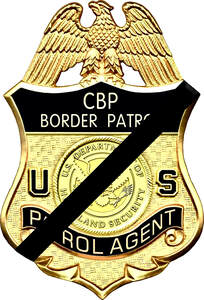 U.S. Border Patrol Badge with a Mourning Band U.S. Border Patrol Badge with a Mourning Band As of March 6, 2023 the U.S. Border Patrol has suffered 154* fallen. Titles
The names that appear below hold a place of honor. They have made the ultimate sacrifice in an effort to fulfill the oath each officer took to protect and defend the United States of America. The facts regarding each officer are presented without major editing of the "language of the day" found in the reports detailing the circumstances of each event. This is done to provide the reader an association with historical timeframes. Employees who died in the line of duty due to being exposed to deadly illnesses will not have the cause of death listed. I will note that Border Patrol Agent John Charles Gigax is not recognized as officially fallen by Customs and Border Protection or the U.S. Border Patrol. The Border Patrol Foundation and the Border Patrol Museum also fail to recognize him. He is remembered by all except organizations containing "Border Patrol" in their title. He is remembered by the:
The U.S. Border Patrol, the Border Patrol Foundation, and the Border Patrol Museum should fix their oversight. HonorFirst.com remembers and lists Agent Gigax among the fallen. 1929
Earl A. Roberts Date of Birth: August 21, 1894 Entered on Duty: January 21, 1929 Title: Patrol Inspector End of Watch: March 24, 1929 Details: Patrol Inspector Earl A. Roberts was shot by a liquor smuggler at about 8:00 p.m. Saturday, March 23, 1929, and died from the wound at 5:00 p.m., Sunday, March 24, 1929. The shooting occurred on the St. Clair River, in Algonac, Michigan. Inspector Roberts was working with Patrol Inspector Stanley H. Graham, when they noticed a motorboat towing a small rowboat approaching from the direction of Canada. The officers proceeded along the shore following the course of the boat in an attempt to intercept it when the shore was reached. The officers separated in order to converge on a probable landing point. The motorboat came to the shore, at which time Patrol Inspector Roberts stepped aboard the stern of the boat and identified himself as a federal officer. Patrol Inspector Graham, who was standing on the shore a few feet from the boat, flashed his light on the occupants and observed that an individual known to him as Vet Brown was standing in the center of the boat with a .45 caliber revolver aimed at Inspector Roberts. Inspector Graham instructed Brown to surrender; however, the latter fired, point-blank, at Inspector Roberts and immediately whirled toward Inspector Graham, firing the remaining bullets in that direction. Inspector Graham emptied his gun in returning fire, but none of the shots exchanged hit their mark. A second individual in the boat, later identified as Clayton Smith, had jumped from the boat into the rowboat that was being towed and had cast-off, setting a course for Canada. Smith was a witness to the events and later testified on behalf of the government in the case against Brown. Survivor benefits - As per this document, his wife received $82.50 per month. Gravesite 1930 Harry E. Vincent Date of Birth: October 3, 1895 Entered on Duty: February 16, 1926 Title: Patrol Inspector End of Watch: March 25, 1930 Details: During the evening of March 23, 1930, Senior Patrol Inspector James E. Renshaw and Patrol Inspector Harry E. Vincent were inspecting northbound traffic about one mile north of Oceanside, California. The traffic check operation was being conducted on a temporary roadway where new construction was underway. At 10:00 p.m., an automobile traveling in a southerly direction missed the detour and struck down Officers Renshaw and Vincent. Both officers were knocked unconscious. A bystander, Mr. William Trotter, took charge of the situation. Mr. Trotter had the officers transported to a clinic in Oceanside. He also sent word to other Patrol Inspectors working nearby in conjunction with the traffic check operation. Senior Patrol Inspector Renshaw was not seriously injured but Patrol Inspector Vincent was in serious condition with a fractured skull. The following day preliminary arrangements were made to move Inspector Vincent to the Navy Hospital in San Diego, California, but after consultation by several doctors, it was agreed that there was little chance for recovery and no chance at all, if Inspector Vincent was moved. Patrol Inspector Vincent passed away at 5:00 a.m., March 25, 1930. Survivor benefits - As per this document, his wife received $75 for her and their child per month. Upon his wife remarrying, the child received $41.67 per month. Gravesite 1932 Frank Vidmar, Jr. Date of Birth: September 20, 1901 Entered on Duty: July 6, 1931 Title: Patrol Inspector End of Watch: March 24, 1932 Details: Patrol Inspectors Frank Vidmar, Jr. and James W. Hudson were performing voluntary extra duty in the vicinity of Lewiston, New York, in an effort to apprehend a known alien smuggler. Since the government vehicle customarily used was known to the smuggler, the personal automobile of Patrol Inspector Vidmar was being used, with Inspector Hudson doing the driving. The smuggler was encountered in his automobile, accompanied by two other persons, at Lewiston Heights during the early morning hours. He disregarded the command of the officers to stop, and increased the speed of his vehicle trying to escape. The officers gave chase pursuing the smuggler's car at 50 miles per hour into the city of Niagara Falls. At a curve in the roadway, the officers' car skidded on the icy pavement and collided broadside with an oncoming trolley car, demolishing the car owned by Patrol Inspector Vidmar, and causing injuries that resulted in his death. Inspector Vidmar died at 4:52 p.m., March 24, 1932, after failing to regain consciousness. He sustained a fractured skull, brain concussion, and a crushed chest. Patrol Inspector Hudson was badly injured but survived. Survivor benefits - As per this document, his wife received $67.50 per month for her and their child. Gravesite
Comments
|
Clifford GillBlog author, retired U.S. Border Patrol Assistant Chief and, current U.S. Border Patrol employee advocate. Ray HarrisSite founder and owner, former Supervisory Border Patrol Agent and retired Immigration Special Agent. Joseph BancoU.S. Border Patrol historian and retired Deputy Chief Patrol Agent. Archives
July 2024
I prefer that you leave comments. However, if you wish to contact me, please do so by emailing [email protected].
|
||||||||
- Home
-
For USBP Applicants
-
USBP Pages and Links
- Firearms Qualification Course
- Military Time Buy Back
- Station MWRs
- Transitioning Out of the USBP
- Fast & Furious
- U.S. Border Patrol Fallen >
- Honor First and Esprit de Corps
- USBP Photo Galleries
- U.S. Border Patrol History >
- U.S. Border Patrol Honorary Awards
- Upholding Honor First >
- U.S. Border Patrol Authorized Devices
- Border Patrol Stories
- What's Important Now - Academy Podcast
- Badges
- Veterans
- Tips for the Media
- Links
- Acronyms
- Border Patrol Locations
- Sector/Station FaceBook Pages
- Ten Codes
- Online Forums
- Search
- Home
-
For USBP Applicants
-
USBP Pages and Links
- Firearms Qualification Course
- Military Time Buy Back
- Station MWRs
- Transitioning Out of the USBP
- Fast & Furious
- U.S. Border Patrol Fallen >
- Honor First and Esprit de Corps
- USBP Photo Galleries
- U.S. Border Patrol History >
- U.S. Border Patrol Honorary Awards
- Upholding Honor First >
- U.S. Border Patrol Authorized Devices
- Border Patrol Stories
- What's Important Now - Academy Podcast
- Badges
- Veterans
- Tips for the Media
- Links
- Acronyms
- Border Patrol Locations
- Sector/Station FaceBook Pages
- Ten Codes
- Online Forums
- Search
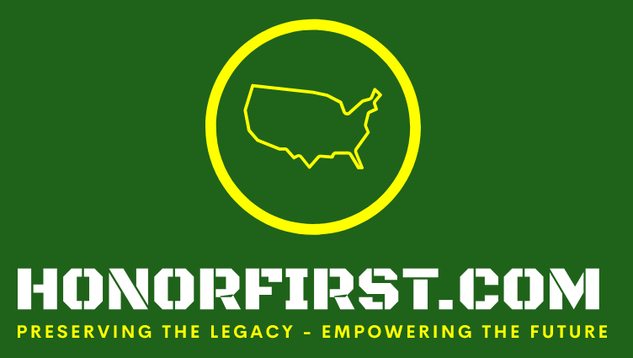

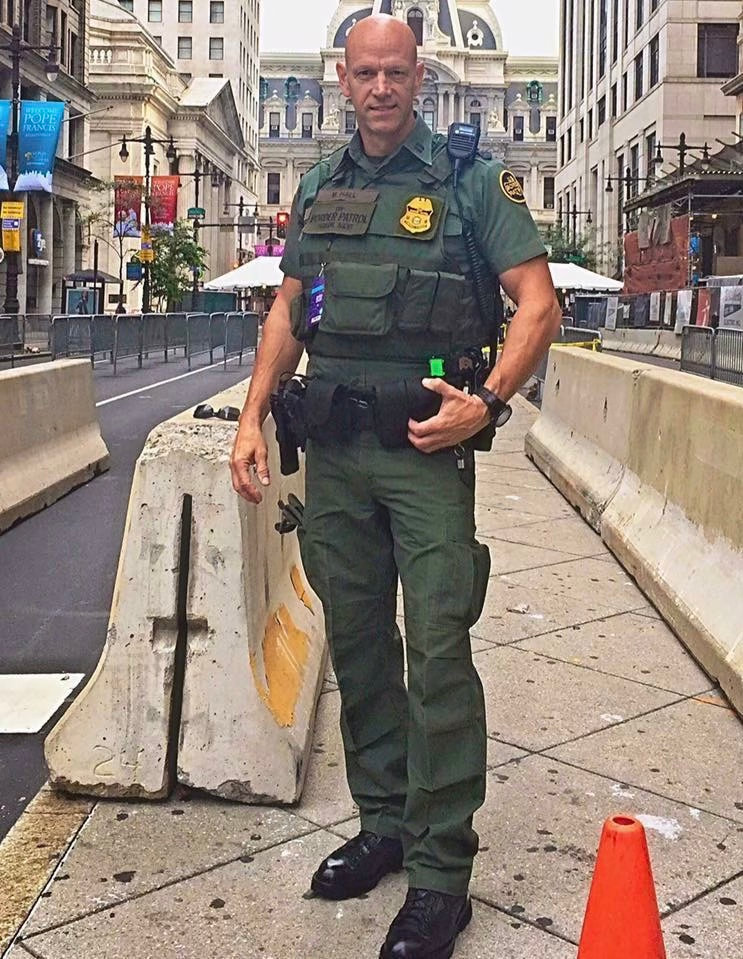
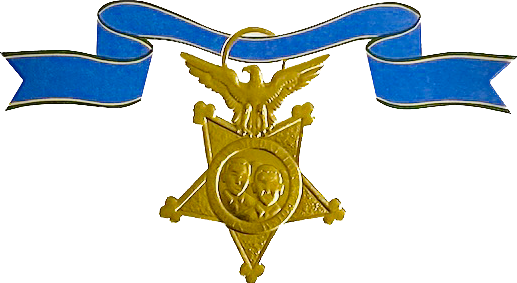
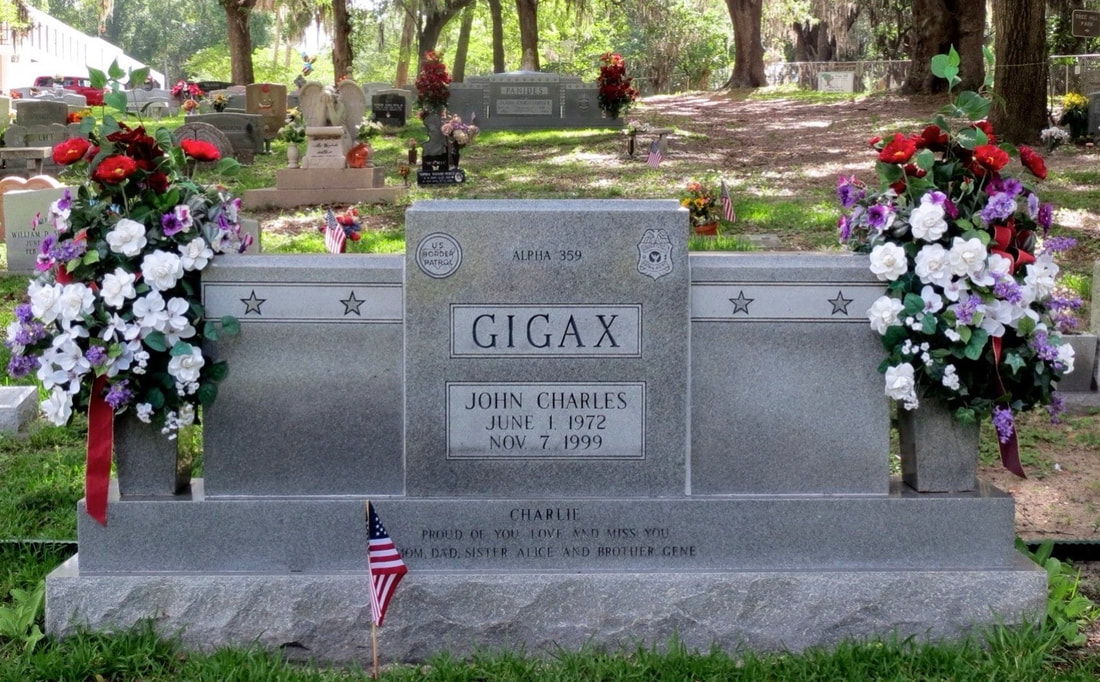
 RSS Feed
RSS Feed
